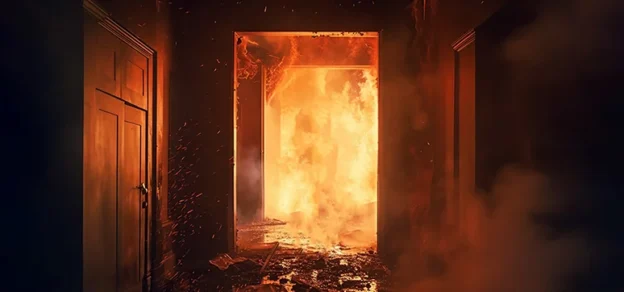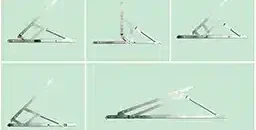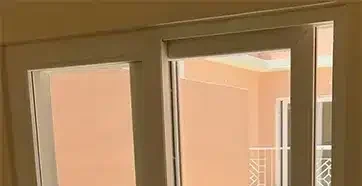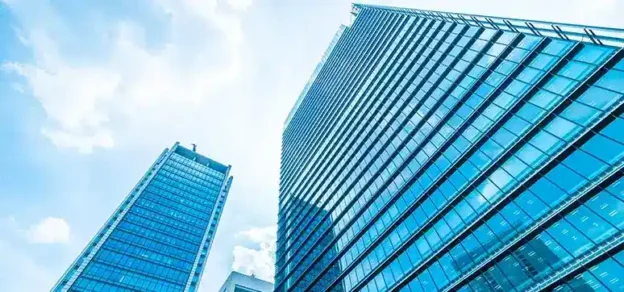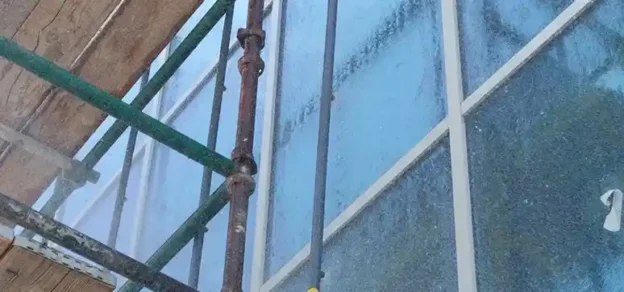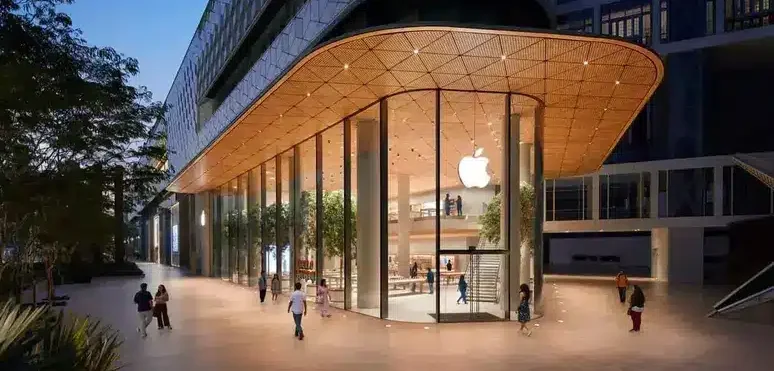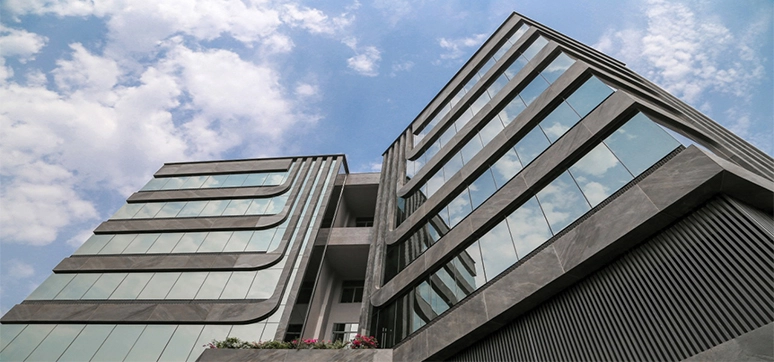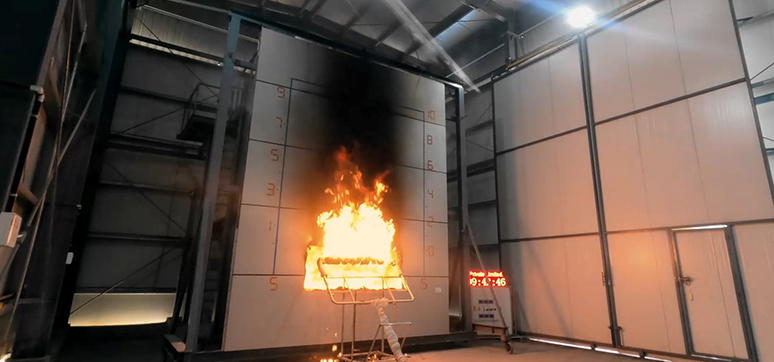The building envelope typically has a greater footprint than the actual building which it protects and therefore accounts for 25-40 percent of the building cost. It can be fabricated using a broad range of options, including traditional fully sealed and modern pressure-equalised cladding panels, curtain walling and structural glazing systems. To add to this complexity, it can also be designed in combination with precast panels, terracotta or traditional brick.
In addition to aesthetics being a key driver when selecting façade material, the choice of glazing systems (including materials and surrounds) should also be influenced by:
• Suitable and safe access for cleaning, including consideration of any possible inconvenience caused to the building occupants
• Maintainability within the annual budget. For example, maintaining coated products is similar to keeping a car clean. Over time, with exposure to the elements, surfaces may show signs of weathering such as loss of gloss, colour change, etc. A regular clean will minimise the effects of weathering and will remove dirt, grime and other build-ups detrimental to finishes.
• The ease and cost of materials replacement, such as façade panels.
• The ongoing cleaning and maintenance cost.
Façade contractors will specify the facade cleaning regime and frequency, to comply with the manufacturer’s warranty terms. The frequency of such cleaning will depend on many factors including:
• The geographical location of the building
• The environment surrounding the building, i.e., marine, swimming pool, industrial, or a combination of these environments
• Levels of atmospheric pollution
• Prevailing wind
• Protection of the building by other buildings
• Possibility of airborne debris (e.g. sand/dust etc.) causing erosive wear of the coating
• If the environmental circumstances change during the lifetime of the building (e.g. rural becomes industrial)
 A façade system must be maintained as per the supplier’s manual
A façade system must be maintained as per the supplier’s manual
The frequency of facade cleaning depends, in part on, the standard of appearance that is required. The requirement to remove deposits will also impact cleaning regularity, as during prolonged contact they can cause damage. For example, sheltered areas can be more at risk of coating degradation than exposed areas. This is because wind-blown salt and other pollutants may adhere to the surface and will not be cleaned away with rainfall. Tall buildings are also at greater risk than low-rise buildings, owing to their direct exposure to rain and ultraviolet radiation, which causes a greater rate and intensity of deterioration. It is therefore likely that these buildings will need to be inspected and cleaned on a more regular basis.
Records of all facade cleaning schedules and frequencies should be kept and maintained and made available to the façade contractor and manufacturer if requested. Failure to comply with the recommended cleaning schedule will nullify any warranties. Despite façade material and construction complexity, in simple terms the cladding on a building’s façade is expected to “keep the weather out” and it must cope with a range of elemental forces, thermal loss, and solar gain. The reality is that the integrity of some element of a façade is likely to fail and this must be proactively recognised and addressed.
Failure is said to have occurred when a system component does not function with design intent. Therefore, when applied to cladding, design intent parameters should encompass an element of time and cost to allow for failures. The design of buildings and the method to access individual units must take into consideration facilities for ease of access when replacing units. Adequate lifting equipment in the form of a roof-mounted BMU, hoist or mobile crane (if access is available), should, therefore, be provided and precautions are taken to avoid damage or injury from falling debris. Replacement components should be fabricated from site measurements and not original production drawings, to suit as-built site dimensions.
When a failure is experienced, the warranty comes into play. Depending on the façade material used, a manufacturer will normally offer a five to 10- year warranty, which is covered by the insuranceappointed specialist façade contractor. However, warranties are conditional and full of exclusions, such as negligence, wear and tear, failure to handle and incorrect installation. Warranties will not provide a remedy for any damage, wholly or partially, if building owners fail to comply. This means that the building owner is responsible for adhering to the clauses within the warranty contract, and the façade system must be maintained as per the supplier’s manual. The façade access strategy must, therefore, be incontrovertible and include back-up solutions to ensure that facade cleaning and maintenance cycles are unaffected.
As all glazing systems are subject to some degradation over time by the action of the elements and building movement, periodic inspection (direct hands-on, close-up examination) and maintenance works should be carried out systematically. For example, a thorough evaluation will include surveying the condition of the various gaskets and seals, to ascertain if the framing components are admitting water into the curtain wall system, as well as evaluating the thermal insulation capabilities of the vision and insulating panels of the system.

The inspection regime should not impair the integrity and performance of the façade system, and the frequency of maintenance and inspection will depend on the nature of the glazing material, its levels of exposure and the building’s location. Poor and improper building maintenance will amplify problems and cause more damage and ultimately necessitate costly repair works. This data should be made available to the façade access specialist during the concept/schematic design stages, to help them specify the most suitable types of façade access equipment. This will also allow the number of systems to be established, which will offer clarity in terms of spatial demands to accommodate multiple façade access systems on the roof and at ground level. However, very often buildings are designed with little or no thought to the façade access strategy and maintenance crews find themselves having to work around inappropriate planning decisions.
Also, challenging scenarios are exposed when the cladding fails post-construction. A cladding system’s inability to be dismantled to facilitate repairs is normally a result of a lack of coordination between other key construction disciplines, such as landscaping and vertical transportation. For example, we have come across situations where a glazing detail has not been thought through in terms of how the glass might be replaced. It is very common to find an internally glazed building where the glass cannot be brought into the finished building due to interior components. This, of course, defeats the object of having internal glazing in the first place. Inefficient access, such as strategies relying on extended reach and wash poles, may also invalidate warranties. It is therefore important to define the access options at the early stages of building design so that the facade cleaning and maintenance strategies can be developed as part of the entire build programme.
To ensure that façade warranties are maintained, the façade access designer must consider an array of interlinking elements and should involve all interested parties, including the building owner, cleaning company, cladding manufacturer and structural engineer. Factors that need to be considered when deciding on façade access equipment include building height, façade geometry, industry codes, and standards. Without full and thorough consideration of everything that may impact the warranty validity, any failure in a façade’s material could prove to be extremely costly.



